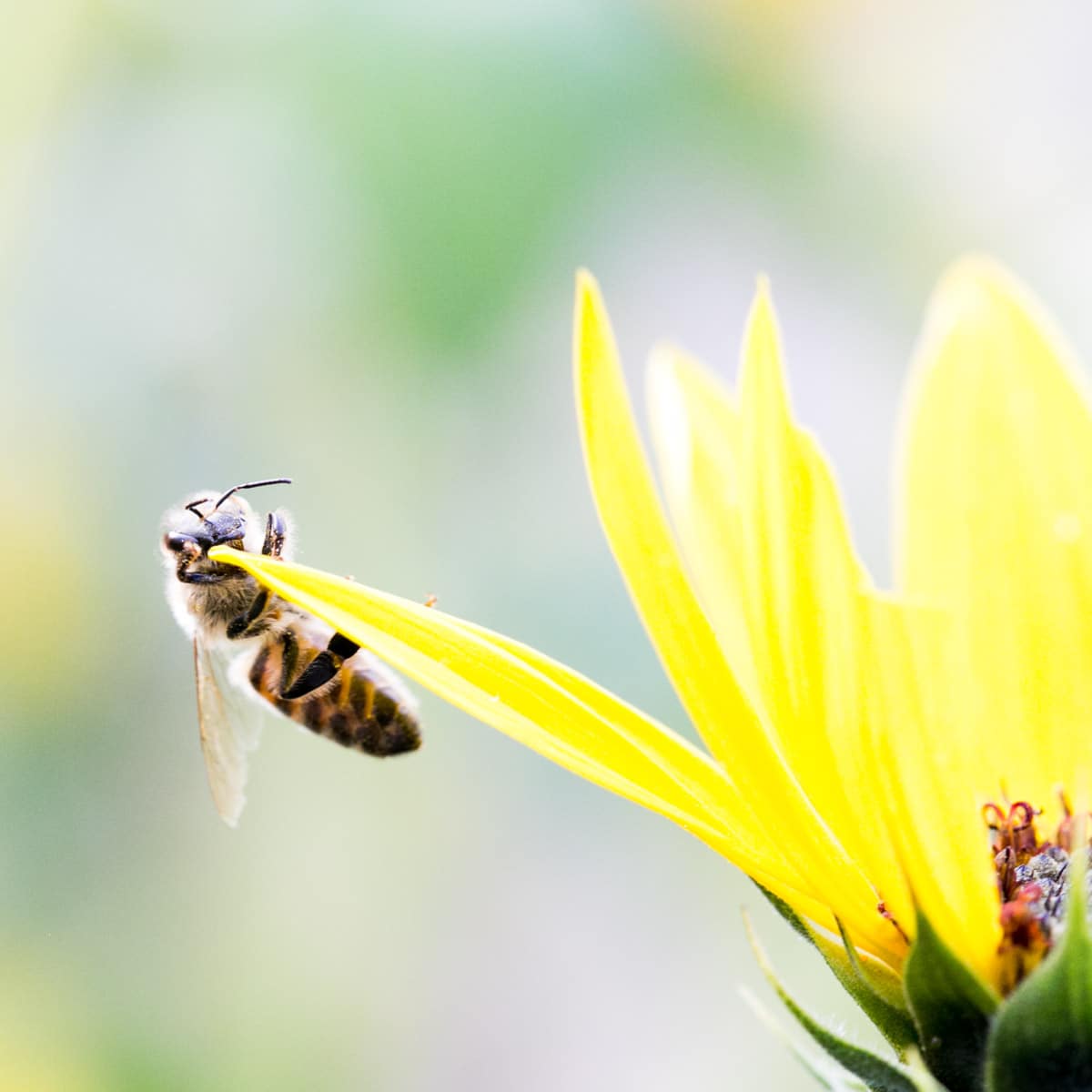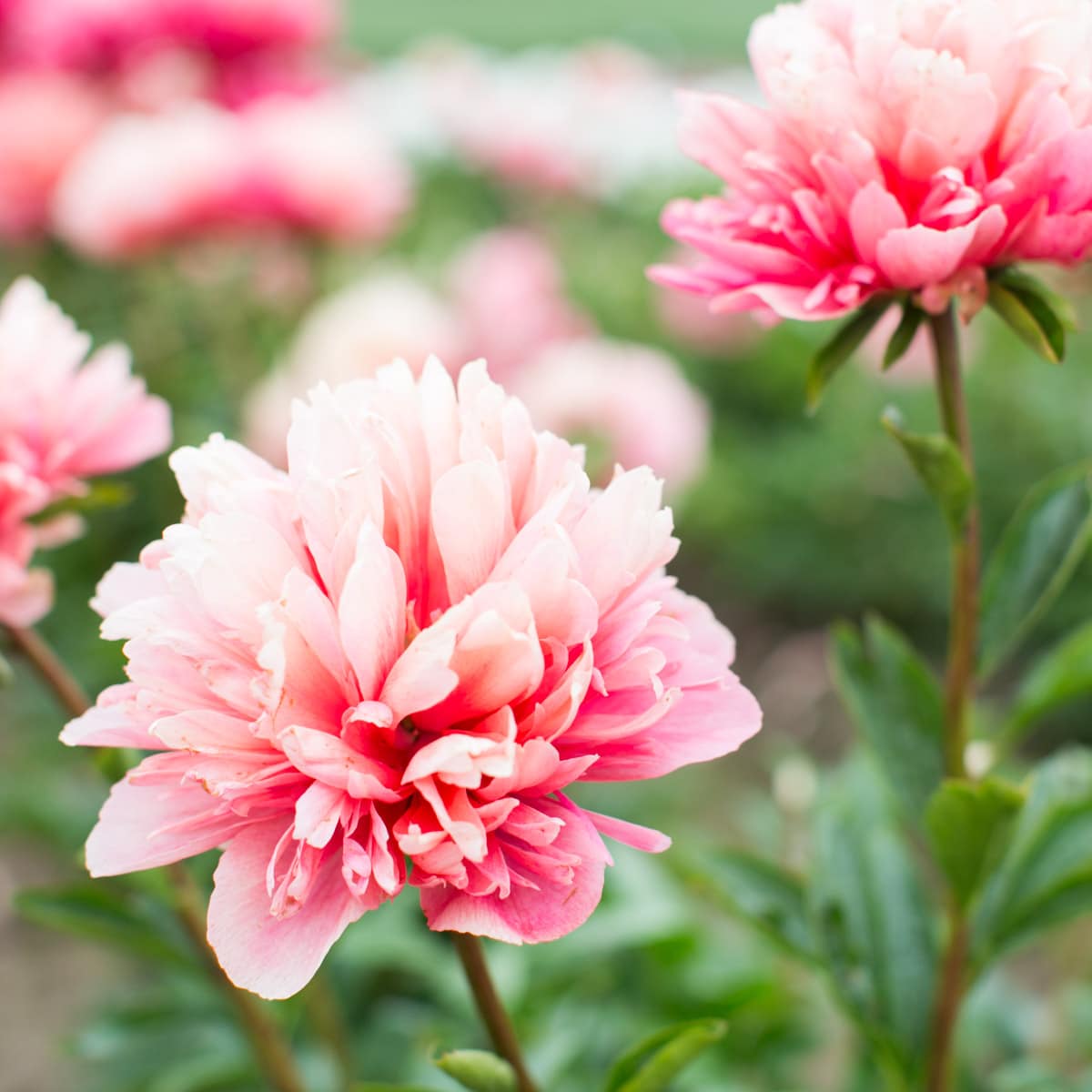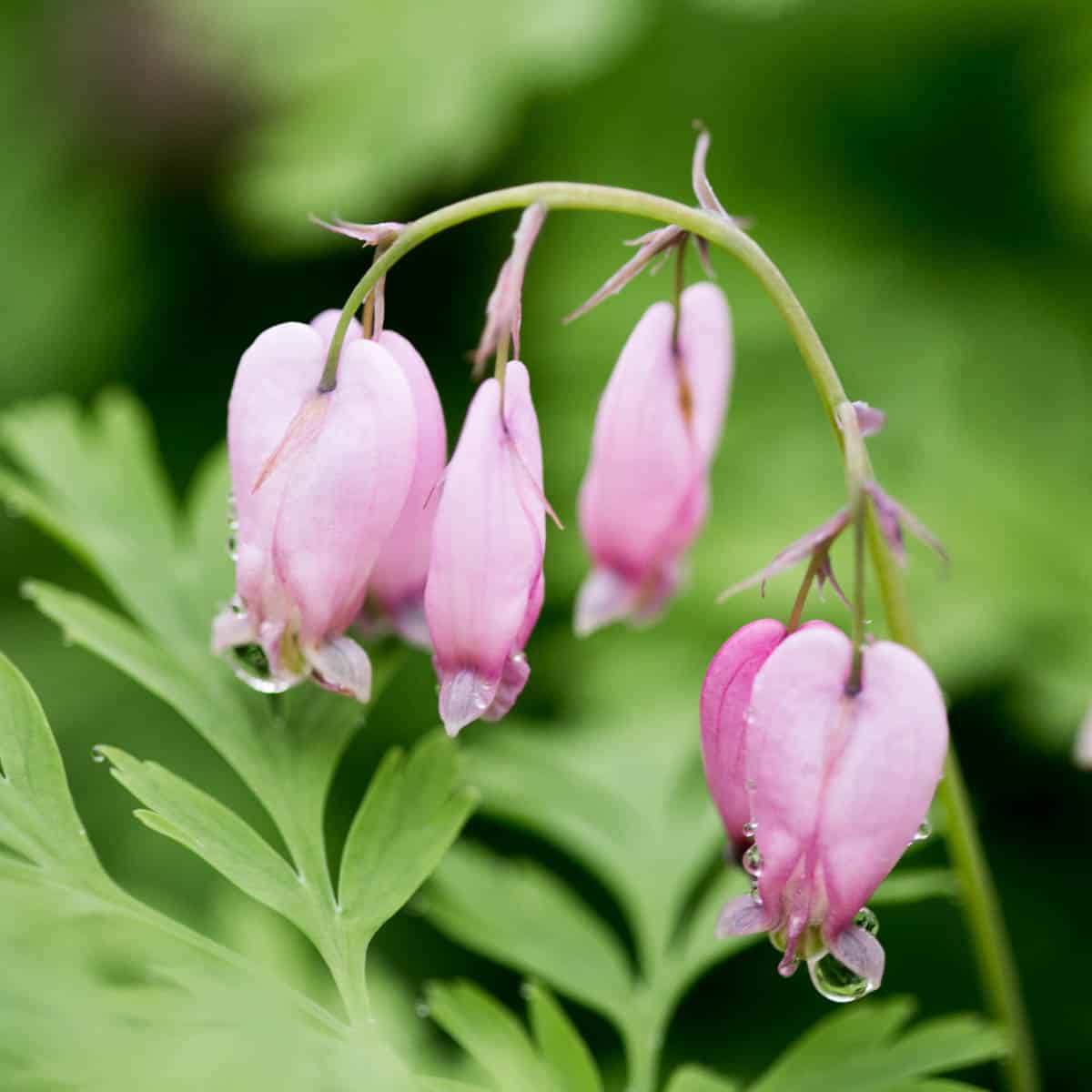How To Grow French Lavender (Lavendula dentata)
French lavender is one of our favorite flowering herbs to add to the garden beds. It’s elegant flowers and light fragrance bring so much joy in mid spring.
So I just had to write an article on this romantic bloomer. Welcome to the complete guide to French lavender plant care!

French Lavender is a heat loving lavender variety that loves full sun and well-drained soil.
This lesser known lavender variety features beautiful butterfly shaped flower buds that bloom in early to late spring. French lavender plants are easy to grow but need specific conditions in order to thrive.
Keep reading to learn how to grow and care for your French lavender plant.
About
Also known as butterfly lavender, this beautiful herb boasts gorgeous pink to purple flowers in spring. The fragrance of this lavender variety is lighter than others, and the essential oils in French lavender are often used in cleaning products. The Latin name for French lavender is Lavandula dentata.

French lavender flowers have a unique butterfly shape, which are paired with soft sage green leaves. The Latin name “Dentata” refers to the leaves, which are serrated and look like teeth. French lavender loves heat but does not thrive with high humidity.
They can be grown as a perennial in areas with mild winters and new growth appears in mid to early spring.
This evergreen shrub is native to Mediterranean regions and enjoys sandy soil, lots of heat, and a growing environment that is on the dry side.
French lavender is less fragrant than English lavender plants. It has a mild scent that is not typically used for culinary purposes, but is often used in cleaning products.
Plant Profile
French lavender has the following traits:
- Family: Lavandula
- Geographic Origin: Mediterranean regions
- Hardiness: Perennial in warm zones, annual in cold zones
- Plant Zone: Zones 8-11
- Plant Dimensions: 2-3 ft tall, 24-48 inches wide
- Exposure: Full Sun
- Soil Type: Sandy, well draining
- pH: Slightly alkaline
Get our list of the best companion plants for salvia here (including lavender!).
Definition Of French Lavender
French lavender is the name given to two different types of lavender, but the care and appearance of both are very similar.
Lavandula stoechas is lavender topped with beautiful purple butterfly shaped flowers. It is referred to as Spanish lavender Mediterranean regions such as France, Spain, Turkey or Greece. It is sometimes sold under the name French lavender.
Lavendula dentata is referred to as French lavender, though it comes from Spain. French lavender is not as fragrant as many other lavender varieties, and it grows well in limestone. Natively, it can be found growing on Spanish islands.

(Read more here about the differences between these two commonly confused lavender varieties.)
True French lavender comes from the Mediterranean regions of Spain, and Spanish lavender plants and French lavender plants are often confused.
(Lavandula angustifolia, or English lavender, is the most common type of lavender. Also known by the common name True Lavender, it features flowers on long spikes. English lavender has a much stronger fragrance.)
Why You’ll Love French Lavender
French lavender is a beautiful ornamental plant often used in the garden to attract bees and butterflies. It has a wonderful fragrance but is not as strong as other lavender varieties. French lavender makes a perfect companion to a cottage styled garden.
Here’s a few more reasons why you’ll fall in love with French lavender:
- Very easy to grow
- Can withstand hot areas of the garden and is drought tolerant
- Can be grown as a perennial in zones 8-11
- Disease resistant
- Naturally repels aphids, protecting other plants like roses
- The fragrant flowers have a light scent but still attract plenty of bees and butterflies
- In warm climates French lavender will bloom from early summer to late summer!

Learn about the best companion plants for lavender here!
Growing Zones
French lavender can be grown as a perennial in zones 8-11. These regions provide the right conditions for this heat loving lavender plant. They thrive in warmer climates that do not have harsh freezing temperatures in winter.
You can research your own USDA hardiness zone right here.
How To Care For French Lavender
French lavender craves sandy soil with good drainage. It will not grow in clay soil. French lavender varieties thrive in warm climates and need full sun.
And too much water can cause rot in the roots of this lavender variety. French lavender loves dry conditions and good air circulation, so giving your plant ample space is important.

Once established, this low-maintenance plant does not need much care or attention- but you must give it the right sun, soil and drainage in order for it to thrive!
Keep reading to learn all the details of growing these fragrant plants.
Sunlight
French lavender craves a sunny spot in which to grow. 8-10 hours of direct sunlight during the height of growing season is perfect for this plant. Fill the sunny, hot areas of your garden design with a romantic display lavender… both you and your new plants will be happy!

Sunlight is so important to French lavender that it can die if it does not get enough! Make sure to place your lavender in a spot where the entire plant is in a sunny location.
Signs that your French lavender is not getting enough light:
- The stems start reaching or stretching for the light and become leggy
- The color of the lavender leaves turns gray or yellow
- Very few blooms, or failing to bloom at all
- The stems become very weak
- The production of the oil in the lavender lessens and the plant loses fragrance
Avoid all of this issues by planting lavender in a very sunny location!
Get the best list of flowers for hummingbirds and butterflies here.
Soil
French lavender needs well draining, loamy soil with an alkaline pH in order to thrive. They do not need a nutrient rich soil!
Excess water must drain from the soil, or root rot will occur and kill the plant (water logged soil is the #1 killer of lavender!).
French lavender actually thrives in poor soil and does not need a nutrient dense soil in which to thrive. Use care when preparing the soil for French lavender- do not fertilizer or add lots of nutrient dense compost!
The pH level for this lavender variety should be between 6.5 and 8. Acidic soils can be modified by mixing lime into the soil.
Heavy clay soil must be replaced in order for lavender to thrive. Dig out the area that features clay soil and replace it with a light soil mix and gravel or small rocks/pebbles for drainage. Soil that is moderately heavy in clay can be modified with sand, pea gravel and compost for added drainage.

Remember, French lavender naturally thrives in a Mediterranean region that has sandy, well-draining soil. They cannot survive in areas with swampy or clay soil. And this beautiful bloomer does not need extra nutrients or fertilizer added to the soil- it will even thrive with a bit of neglect!
When + Where To Plant French Lavender
The best time to plant French lavender is in early spring after all signs of frost have passed. This beautiful herb can also be planted in mid to early fall in areas that do not have cold winters.
Plant your young plants in an area that gets full sun but is out of harsh wind. This will protect them from wind damage as the plants mature.

Learn how to take fabulous macro flower photography here.
Bloom Time
French lavender can begin blooming in mid spring. The warmer the climate, the earlier the plant will begin to bloom. The local weather and climate and also affect bloom time-during cold springs lavender will bloom later in the year.
We live in Southern Idaho and our French lavender typically begins blooming in early May.
Get our beginner’s guide to growing flowers here.

Growing In Pots + Containers
French lavender make great container plants and can thrive in a container. A major benefit to container growing is that you can easily over winter the plant in your garage or sun room without having to worry about harsh frosts. A compact French lavender variety can be grown, and/or the container can be sized up as the plant grows each season.
How To Grow French Lavender In A Container:
- Choose a container large enough to grow your lavender plant. 12-16 inches in diameter is typically good to start (as the plant grows each year you will need to size up your container for growth)
- Add a layer of pea gravel or small rocks to the bottom of the container for extra drainage
- Mix two parts of potting soil with one part sand.
- Loosen the roots of your lavender plant or score them gently
- Carefully place your lavender plant into the soil and back fill around the plant
- Pack the soil in around the lavender plant
- Water the plant in well + place in a warm area that gets 6-8 hours of sunlight
After the first season of growth you will need to re pot the larger plants. This will also help to freshen the soil and give the lavender plant nutrients for a new season of blooming.

Winter Protection
French lavender needs protection from cold temperatures in the winter, especially in cooler climates.
The best way to protect your lavender plant over winter is to protect it with an organic mulch. For best results, add a thick layer of mulch around the perimeter of the lavender plant in fall.

In cold climates, it can be a great idea to grow your lavender in a container and keep it in a cool, dry place during winter. Water it occasionally, and the plant will go dormant but spring to life again the following year.
How Often To Water (And How Much)
French lavender prefers dry conditions and is drought tolerant. Because of this, it does not need to be watered every day.
Follow these watering guidelines for success:
- Water deeply a few times a week after planting French lavender
- Once established, water mature plants every 2 to 3 weeks
- When the plant is blooming, increase watering schedule to 1-2 times a week (blooming is when buds have appeared, then flowers)
- In severe heat waves and drought, water daily (stop watering once temperatures have returned to normal)
- During cooler temperatures and rain spells, do not water
Remember that lavender plants are very susceptible to root rot. Root rot is directly related to over watering. Lavender in pots and containers needs to be watered more frequently. And first year plants need to be monitored and watered as needed as they adjust to their new life in the soil!

Signs Of Over Watering
Lavender is drought tolerant and too much water can cause this herb major problems.
Signs Of Too Much Water:
- A drooping, sad looking lavender plant
- The leaves have turned a yellow color
- A rotting odor may come from the plant, indicating root rot
- Stunted growth may occur and the plant will fail to thrive
- The soil appears overly wet and moldy
The good news is that these problems are easy to avoid. Just make sure to water sparingly, and always check to make sure potted lavender plants have plenty of drainage holes.
Learn how to get lavender to bloom here!
Fertilizer
Lavender plants thrive in poor soil and do not need to be fertilized regularly.
Container grown lavender plants may need fertilized due to the nutrients leaching from their soil faster. For this reason, it can be a good idea to give lavender grown in pots a very light dose of flower fertilizer.
Mixing a little organic matter into the soil and sand mixture when planting can also help.
Humidity + Temperature
French lavender love warm, dry climates. They cannot thrive in cold temperatures, and will not survive in harsh frosts and snows.
This lavender variety needs a dry climate in which to live, and does not thrive with high humidity. Areas of high humidity can increase the chance of fungal disease.
If growing in an area with high humidity, keep an eye on your plant and watch for areas of fungal disease.

Growing French Lavender Inside
Place French lavender in an indoor area with a south-facing window and lots of warmth. A sun-room or plant room can be the perfect spot for this beautiful lavender variety. Rotate your plant so that all sides receive direct light.
If you live in a zone that has harsh winters, you can bring lavender grown in containers inside during the cold winter seasons.

FAQ’s
There are many different varieties of lavender, and French lavender is just one variety. French lavender has unique butterfly shaped flower petals and serrated green leaves. It has a light fragrance and is not as well known as English lavender.
French lavender can be grown as a perennial in zones 8-11 and can be over wintered in a container in colder zones. As a perennial, this flowering herb produce new blooms each year.
Plant French lavender in an area that gets full sun but is out of the wind. Make sure to choose an area that has well drained, sandy, slightly alkaline soil.
This lavender variety loves sun! Plant it an area that gets at least 6 hours of sun per day. 8 hours of full sun is even better.






